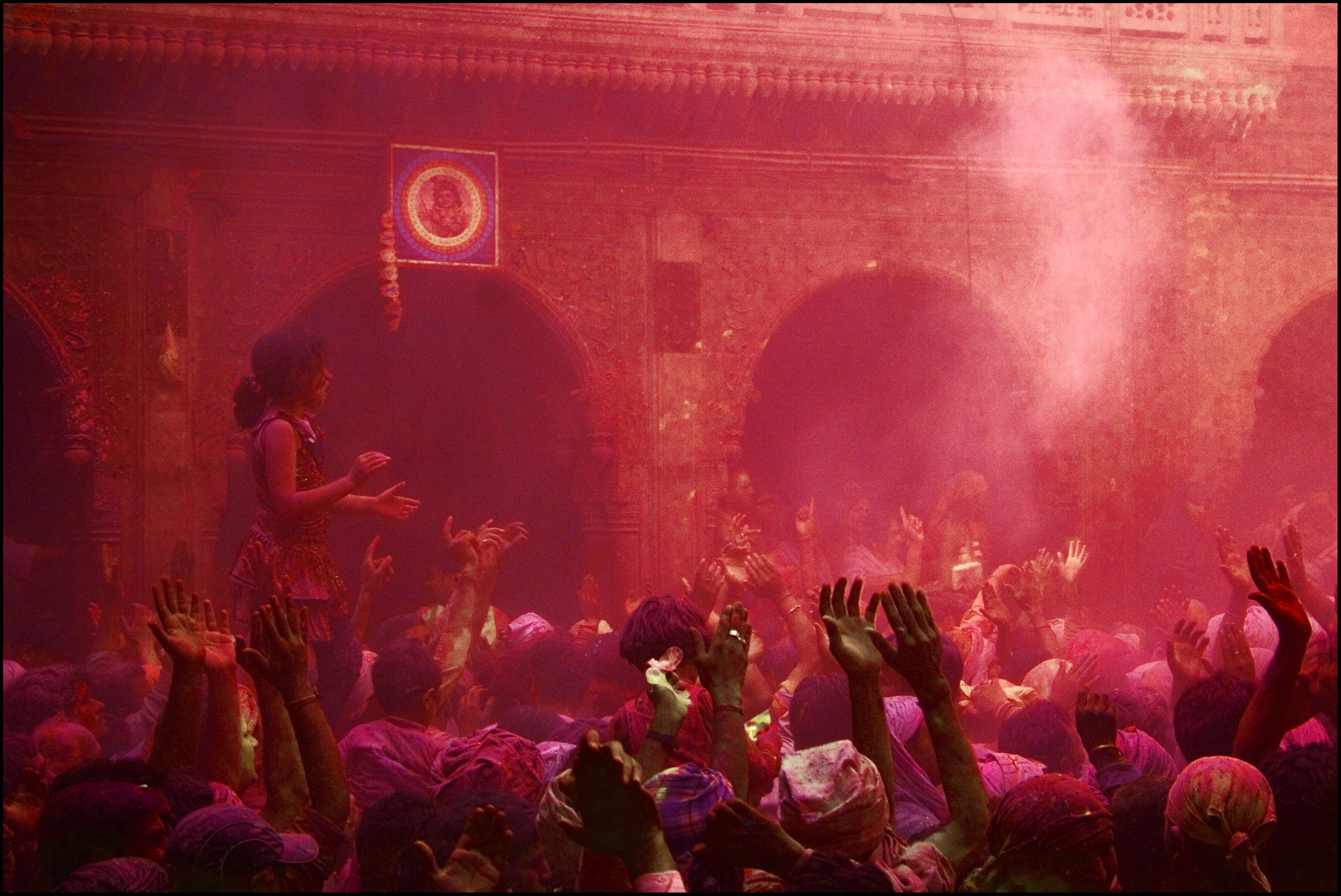Sita Navami or Sita Jayanti, is celebrated as the birth anniversary of Ma Sita. On the day of Sita Navami, women observe fast for the whole day, and pray for the long life of their husbands. In few places, it is observed on Navami thithi of Shukla paksha in the month of Vaisakha. Ma Sita was born on Tuesday, in Pushya Nakshatra, as mentioned in ancient scriptures.
Sita Navami
Sita Navami is an auspicious festival for Hindus. It mainly falls after one month of Ram Navami. Ram Navami occurs in the Shukla paksha of the Chaitra month, as per Hindu Lunisolar calendar, and Sita Navami occurs exactly one month later, that is, Shukla paksha of Vaisakha month. Sita was adopted by the Mithila king, Janaka. Hence, the occasion is also called Janakai Jayanti. Worshipping Ram and Sita together on this day, brings peace and joy in married life. In Sanskrit, Sita is derived from the word ‘Seet’, which means furrow, as she was found in a trench, in the field of Mithila. Sita Devi is also known by the names:
- Janakai- daughter of king Janaka.
- Jankatmaja – ‘Janaka’ is Sita Devi’s father, and ‘Atmaja’ means soul. Thus, she is regarded as Janaka’s soul.
- Janakanandini – Janaka’s daughter who brings joy.
- Bhumija and Bhumiputri – One who originated from Earth.
- Maithili – means the princess of Mithila.
- Rama – wife of Ramji.
- Vaidehi – When Janaka moved to the state of transcendental meditation, defying physical consciousness, he was named as Vaideh, and so, Sita is called as Vaidehi.
The role of Ma Sita in life of Rama, was silent; she was a devoted wife, who lived in complete acceptance and surrender. When Rama had to go for an exile for 14 long years, she stayed calm and decided to accompany him, showing no recent discomfort. Despite Rama’s insistence that she lives in the comforts of the palace, she remained undeterred, and took on the arduous journey with him.
ORIGIN AND SIGNIFICANCE:
There are many legends associated with the birth of Devi Sita. Some believe that Sita was born in Nepal. From the Tamil version of Valmiki’s Ramayana, it is mentioned that Sita was found in the lap of Earth, in a golden casket, in the trench of a field, in the Sitamahri, district of Mithila region, in the state of Bihar. She was adopted by the king of Mithila and his wife Sunaina.
There is a version of the story in the epic Ramayana. Manjari described that once King Janaka saw Menaka in the sky, and he wished for a child. Menaka told him that she had given birth to a child, and he should adopt her.
Significance:
Sita Jayanti has a great significance for Hindu devotees. Rama is an incarnation of Vishnu and Sita, an incarnation of Lakshmi. Devi Sita is always recognised for patience and commitment towards her husband. Her decision to be in exile with her husband for 14 years, despite the fact that she lived a royal life before marriage, gave her the title of a supreme woman. One who worships and offers prayers to Sita Ma, with proper rituals on this day, is bound to be blessed with a happy marital life.
DEITIES ASSOCIATED WITH THE FESTIVAL:
On the prosperous day of Sita Navami prayers are offered to Devi Sita, Lord Rama, Lord Lakshman, along with Bhumi devi (Earth) as Sita originated from a field furrow.
CUSTOMS, TRADITIONS AND RITUALS:
On Sita Navami, a small mandap decorated with beautiful fresh flowers, is made in temples and ritual places. Murti of Sita along with Rama, Lakshman, King Janaka and Mata Sunaina, is placed. Earth is also worshipped on the day, as she is believed to have originated from earth.
- Various offerings like til, fruits, rice and barley are made.
- Special Naivedya is prepared and distributed after aarti.
- Women keep a long day fast, on the day of Sita Navami. It is believed that observing a vrat on this day, brings modesty, peace, motherhood like virtues in one’s life. Also it helps in the long life of their husband.
- Special rituals like Maha aarti and Maha Abhishekam are performed in all the Ram and Janakai temples, all over India.
- Recitation of Ramayan, followed by bhajan kirtan, are held at various places.
- Processions are carried out with Moola virat of all the deities on chariot, while singing praises of Ram and Sita.
PUJA VIDHI AND KATHA:
Vidhi:
- Wake up before sunrise and takes a holy bath chanting the following mantra:
“Ganga cha yamunaChaiva Godavari Saraswati
Narmada Sindhu Kaveri Jalesmin Sannidhim Kuru”
- Make an intention to observe a fast on this day. One can consume fruits, milk, nuts and curd. Break the fast on the next day, by sipping water.
- Wear a twelve mukhi rudraksh bead mala. It purifies your soul and strengthens will-power.
- One can visit Ram Sita temple or can worship at home.
- Offer sandalwood, fruits, incense, fresh flowers and dhoop.
- Recite the Mantras and vrat katha.
- Organise Ramayan paath, and invite brahmans to perform the paath.
- Recite Ram Raksha Stotra.
- Perform homa, havan and aarti.
- Pay respect to Earth and worship Bhoomi Devi.
Katha:
Once upon a time, there lived a Brahmin named Devdatt, with his wife, Suhana. Unfortunately, his wife was an adulterer, and was indulged in bad habits. Once, when Devdatt went out for alms, she went for gambling. Due to such terrible activities of Suhana, the whole village was destroyed. Suhana was reborn in the house of chandals, as a leprosy patient. She visited Vedvati village in a very miserable condition, on the day of Pushya nakshatra, in Shukla paksha, and begged for something to eat. She was asked to come on the next day after parana, as it was Sita Navami and food was not distributed on that day. But she was offered water and tulsi. She died after some time, owing to her bad condition. It was fortunate on her part, that she kept Sita Navami vrat, by chance for that day, and thus all her sins got washed away, and she was reborn as the wife of the king of Kamrup. She established several temples and performed several religious tasks. She devoted her life to charity and religion. It is believed that all who observe Sita Navami with proper rituals, are bound to be blessed with peace, prosperity and happiness in married life.
CELEBRATIONS ACROSS THE COUNTRY:
Celebration of Sita Navami is carried out in the whole country, with much fervour and excitement. Temples and religious locations all over the country, are decorated with mandaps of four pillars of Bhagawan Ram, Sita, King Janaka and Mata Sunaina. Stories inspired by the life of Sita Ma are read on this day.
Devotees observe vrat for the whole day with full devotion, faith and dedication. At places like Ayodhya in Uttar Pradesh, Bhadrachalam in Andhra Pradesh, Sita Samhit sthal in Bihar, and Rameshwaram in Tamil Nadu, this festival has been given ample importance. Yagya, Havan, Arti and Maha abhishek are performed in these temples, along with recitation of bhajan, kirtan, and epic Ramayan hymns.
BENEFITS OF CELEBRATING THE FESTIVAL:
It is said that Sita and Rama were born in Pushya Nakshatra. Hence if anyone is born in Pushya Nakshatra, as per birth chart, it is connected with the planet Jupiter – swami of wisdom and knowledge. Women born in this time are most sensible, modest, genuine, and men born during this period are self-regarding. They are not aware of their inner strength, but continuously move forward to achieve success. Observing Sita Navami rituals in a Bonafede manner, brings well-being, riches and joy in life. Married women observe this vrat to imbibe characters like motherhood, humility and for the long life of their husband.



